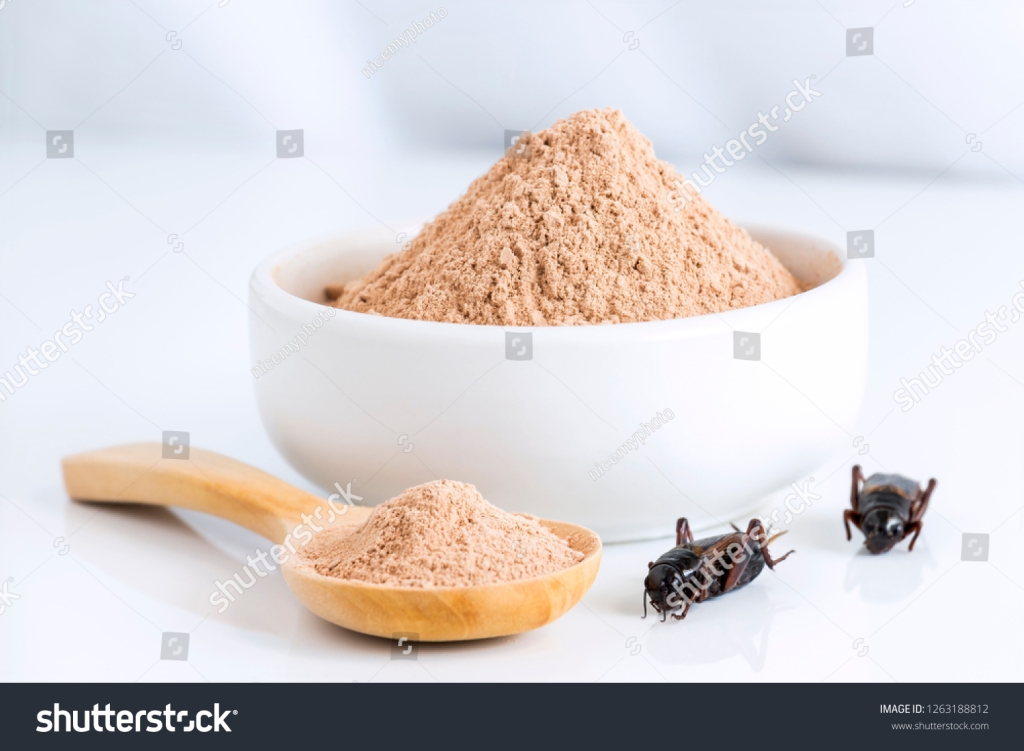The new alternative protein

Image credit: Shutterstock by nicemyphoto
Most people get squeamish when they hear about insect protein, but for centuries, many countries have used it as part of their diet. In the past few years, innovations in this area have skyrocketed due to a growing global population, which will increase by 2050. Not only this, but the use of this source of nutrition will provide a sustainable food supply, with an improvement in resource applications, and reduce food insecurities. Insect protein is a new type of alternative food, and only a few are authorized for human consumption by EU regulations—mealworms, grasshoppers, beetles, and crickets.
Insect protein nutrition is the first topic I will talk about in this article, as most people are looking at different sources of protein, and nourishment for their bodies. There is new research coming out that insect protein has similar benefits, to say, meat, and plant-based protein. There is more nutrient availability in this new source. For example, FAO requires a minimum of 15 grams, and as it shows in the table, the essential amino acid in insects is higher than the minimum requirement. It looks like the amount of amino acid level is the same, higher, or lower compared to egg whites and soybean. Therefore, insect protein would be a great addition to provide the nutritional benefits in our diet. Other vitamins and minerals are also found, Such as, high level of iron. Overall, this source of alternative food has everything from carbohydrates, protein, vitamins, minerals that would provide maintenance for our body. Another interesting fact is the consumption of silkworms—there are hydrolysates—which are produced during the breakdown of large protein structure into smaller units for the body to easily absorb. These provide health benefits, including antihypertension, antioxidant, antidiabetic, and antimicrobial.
Now that we talked about the nutrition about this interesting, yet unappetizing food item for certain people, like me. The next topic I’d like to continue with is the extraction methods, and production. The process is too technical for this article. So, I’ll just say here, that protein in the exoskeleton—the outer cover of the insect—causes discrepancies in the extraction process, also, the protein extraction itself seems new. There are issues in the extraction process from what I’m reading, but I’m not an expert either. This is a new area, and more research is needed to find a better way to extract the protein. The various methods are important to produce a final product. Several factors have an influence on the extraction. The yield amount from the extraction can provide either a high yield, which is the preference to provide an efficient production, but the enzymes used can be expensive, and is a challenge for manufacturers. Second, the solubility can vary depending on the process, insect species, processing method, and extraction technique. This can affect the interaction with other ingredients, and how well it mixes in the final product. Lastly, how scalable is the ingredient, in other words, the ability to produce insect proteins on a larger scale. There are several challenges here, such as, regulations, consumer acceptance, figuring out suitable way to feed the insects, and processing technologies.
Other benefits of insect protein in food formulation include emulsification, foaming, and gelling properties that can be used in several products. From all functional characteristics, solubility seems the most prevalent, depending on several factors in the protein structure. Many applications are used, and added in breads, pastas, protein bars, snacks, and meats. I remember seeing cricket chips, and lollipops with crickets in the middle, not too long ago. To be honest, I’m one of the consumers that wouldn’t try it. I’m hoping to change my mind and take the challenge. Who is with me?
Concerns
Food safety in regards to microbiological, chemical, and physical hazards is a concern during processing. As toxins, such as, bacteria, and viruses, among other hazards like exoskeleton is an on-going issue. The exoskeleton (chitin) can cause physical damage, and food poisoning from certain bacteria pose a health risk. On the other hand, viruses are not a serious risk to humans due to difference in biological makeup; other processing techniques also prevent the spread. Also, insect farming can help limit the amount of chemicals introduced from the external environment. Lastly, evidence shows similar shellfish allergies in insect consumption, which is the highest safety risk, as strict control measures are needed to prevent this from happening in insect production. Fraud is another concern. There needs to be a process to detect any addition of ingredients, such as soy, which is considered as an allergen. Also, possible melamine contamination, that is similar to the milk scandal. More research is needed to find out what safety, microbiological, and physical hazards pose a risk to human consumption. Until then, I would look for insect products that follow strict safety standards.
References
- Traynor, A., Burns, D.T., Wu, D., et al. (2024). An analysis of emerging food safety and fraud risks of novel insect proteins within complex supply chains. npj Sci Food 8, 7. Website: https://doi.org/10.1038/s41538-023-00241-y.
- Pan, J., Xu, H., Cheng, Y., Mintah, B.K., Dabbour, M., Yang, F., Chen, W., Zhang, Z., Dai, C., He, R., et al. (2022). Recent insight on edible insect protein: extraction, functional properties, allergenicity, bioactivity, and applications. Foods, 11 (19): 2931. Website: https://doi.org/10.3390/foods11192931.
- Hasnan, F.F.B., Feng, Y., Sun, T., Parraga, K., Schwarz, M., Zarei, M. (2023). Insects as valuable sources of protein and peptides: production, functional properties, and challenges. Foods; 12(23):4243. Website: https://doi.org/10.3390/foods12234243.
- Ma, Z., Mondor, M., Valencia, F.G., Hernández-Álvarez, A.J. (2023). Current state of insect proteins: extraction technologies, bioactive peptides and allergenicity of edible insect proteins. Food Funct., The Royal Society of Chemistry, 14: 8129-8156. Website: 10.1039/D3FO02865H.

Pingback: Food science topics – Alimentative